Farmer’s view of Multidrive 6185 self-propelled sprayer
Richard Tesseyman and his brother Chris have to work their way through more than 11,000ha of contract spraying and liquid fertiliser application each year on some steep, and often soggy, ground.
The heavy workload is tough on a sprayer and having seen some hydrostatic self-propelled machines struggle in the past, the pair went in search of a more rugged set-up.
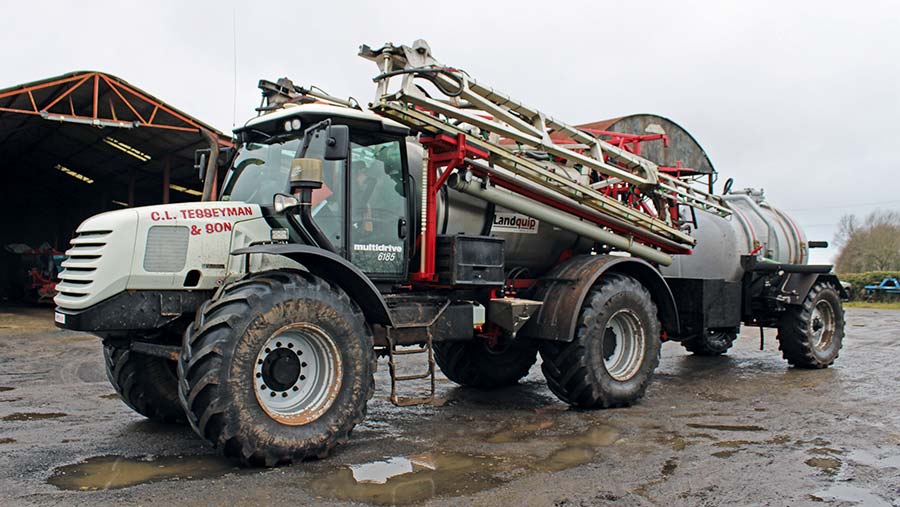
The Multidrive 6185
That came in the form of one of Kelland’s Multidrive tractor units. After spotting one at the Lamma show in 2008, the brothers were suitably impressed and did a deal there and then.
Shortly afterwards, the 185hp Multidrive 6185 model arrived in the Tesseyman’s yard near Knaresborough, Yorkshire.
This came fitted with a John Deere six-pot engine up front, mated to a six-speed ZF powershift transmission that sends power to the wheels via a pair of heavy-duty axles.
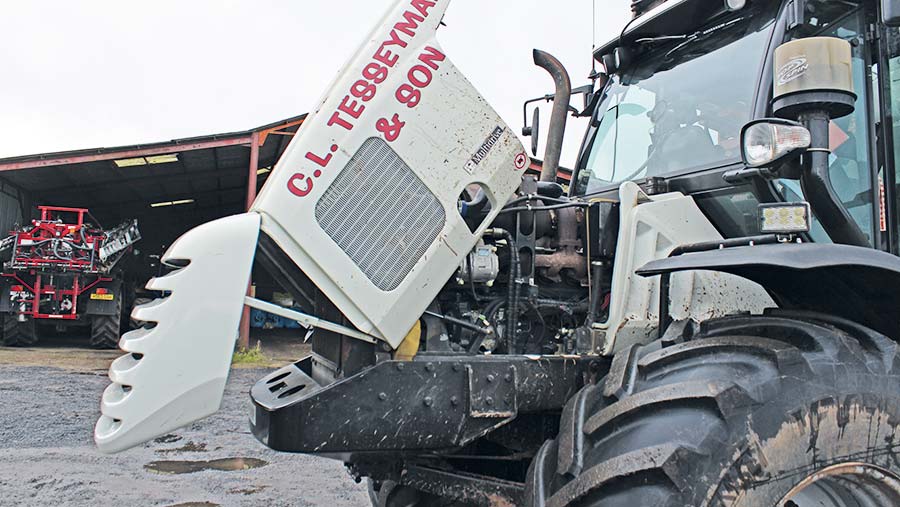
John Deere engine
On the back they opted for a 4,000-litre Landquip sprayer running 24m Pommier booms.
See also: Driver’s view: Dammann DT2000 sprayer
Five years later, the Tesseymans’ spraying area had increased and they needed a second machine to cope with the additional workload. This time they opted for a little more power, going for the 195hp 6195.
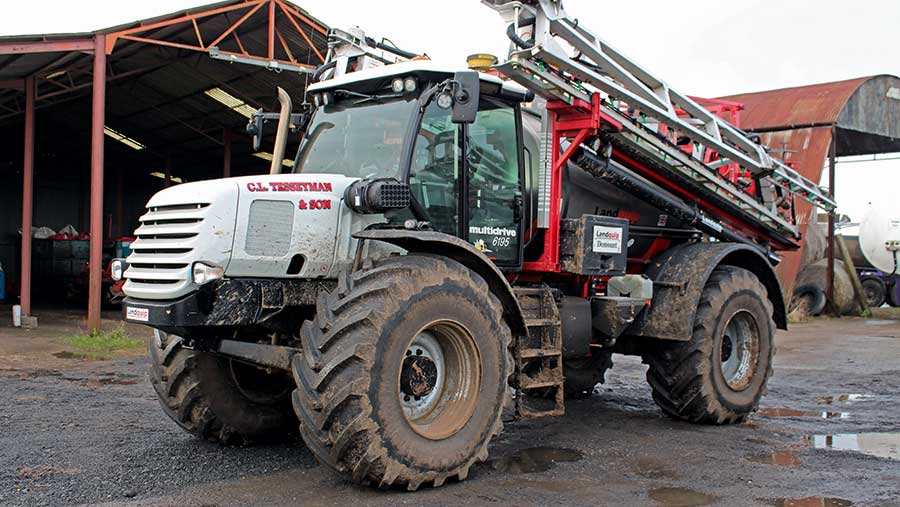
The Multidrive 6195
This newer machine also came with air suspension rather than mechanical, and the engine had common rail injection instead of the old-style manual fuel pump on the original tractor unit.
We caught up with the brothers to find out if the machines have lived up to their expectations.
How have they performed so far?
The Tesseymans’ Multidrives
6185
- Year 2008
- Engine John Deere six-cylinder with mechanical fuel pump
- Power 185hp
- Transmission ZF six-speed powershift
- Sprayer Landquip with 24m boom
- Price paid £127,000
6195
- Year 2013
- Engine John Deere six-cylinder with common-rail injection
- Power 195hp
- Transmission ZF six-speed powershift
- Sprayer Landquip with 24m boom
- Price paid £165,000
For the work we’re doing they’ve been just about perfect. The combination of large-diameter tyres and the ZF transmission with torque converter lock-up in all gears means they just keep going in almost any conditions.
There are also diff-locks on both axles that you can engage if you think you’re really going to be in trouble.
However, we had to get Kellands to fit an electric foot switch for the diff-lock on the 6195 as the original thumb switch on the right-hand console was impossible to find in a hurry.
Transport speed is officially 50kph so it’s quick to get between fields and they’ll go a lot faster than that on row crops.
However, if you’re worried about overcooking it, there’s a lockout for sixth gear just inside the fusebox.
Because we’re running them on Michelin Axiobib 650/60 R30 tyres at 12psi on the front and 14psi on the back, we don’t make much mess either.
The smooth ride – particularly with the 6195 on its air suspension – means we can put liquid fert on to ploughed ground without getting a bad back, and travel at a decent speed.
The fact they can tow a bowser was another big selling point for us. It massively increases our output and means we can cover the ground without having to go to three machines. We have also been pretty pleased with the 24m Pommier booms. They are light, strong and really stable over rough ground, even when we’re applying fert at about 18kph.
Any breakdowns?
We have had very few problems with the machines other than the John Deere engines, which have given trouble on both.
The simpler engine on the 6185 has been the better of the two. This was always a good runner up until 4,500 hours, when the head gasket went – it seems almost impossible to get a Deere engine of that vintage past 5,000 without having to take the head off.
We think the cause is the water pump. There is a phosphor-bronze collar on the shaft that goes soft when it warms up and reduces the efficiency of the pump. That then means water is not circulating properly and the cylinder furthest away from the pump runs too hot, causing the head gasket to fail. Since we changed the head gasket and water pump, it has been absolutely fine.
The engine that came in the 6195 was a lot more troublesome, though. From the word go it just wouldn’t run right and we were getting a horrible vibration in the cab that made it almost undrivable.
Even when it was on tickover it felt like it was fighting against itself. Fuel consumption was also terrible – where the original Multidrive was burning about 9.5 litres/hour, this was up at about 15.
The engine supplier came out several times but couldn’t get to the bottom of it. So in the end Kellands stepped in and put a new block in for us. Thankfully this has been much better and fuel consumption is where it should be.
Steering ball joints are another problem area on the 6185 and they are a pig to change. Also, Multidrive set some toe-in on the wheels of the 6185, which caused the tyres to wear a little unevenly. We have now set it to run straight, which is much better.
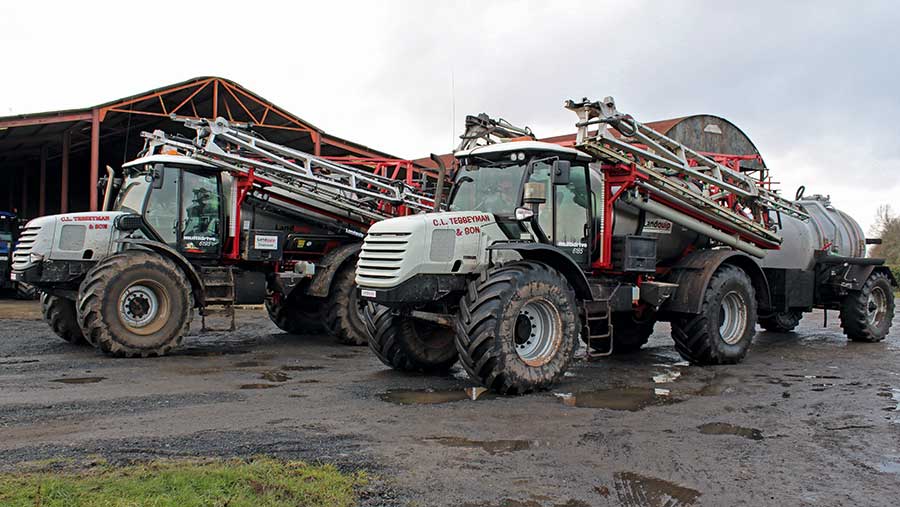
The 6195 and the 6195 Multidrives
Would you have another?
Definitely, but I’m not sure that it would be a new one. All the emissions gubbins that has to be bolted on to them now has meant the bonnet has got bigger and they look far more complicated and fiddly to work on.
We’re also not yet convinced about the new electronic transmission control. We tried it out at a recent sprayer demo day and the programming could do with a bit of tweaking in our opinion.
Prices are also getting more expensive. When we bought the 6185 we paid £127,000 and that shot up to £165,000 for the 6195. However, £10,000 of that increase was down to the wheels and tyres doubling in price.
Because the older machines are so simple to work on and we know how to keep them going, we might buy another second-hand one. If needs be we can give it the same overhaul as the 6185.
Rebuilding the 6185
Last year, when the Tesseymans’ original Multidrive 6185 ticked on to 4,500 hours they decided to give it a bit of cosmetic surgery.
Years of being saturated with corrosive liquid fert had started to take its toll on the paintwork and the rot was starting to set in, particularly on the rear chassis members.
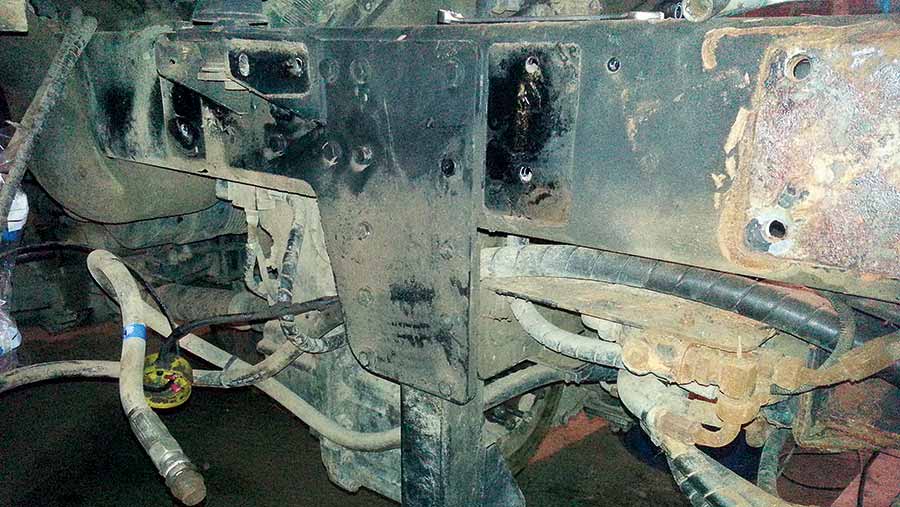
The chassis before
After removing the sprayer, all pipework and the rear axle, they set about the metalwork with the sandblaster.
While it was stripped down they also took the opportunity to redo the brakes – which turned out to have very little wear – and service the rear diff. After they had got it back to bare metal, they had a spray painter apply five coats of paint on the chassis.
The final job was to give it a coat of Bilt Hamber Dynax S50 underseal. According to the brothers, this keeps the liquid fert at bay for about two years, whereas Waxoil needs recoating every six months.
All bolts were also swapped for stainless-steel equivalents as the originals had rusted up solid due to the liquid fert.
Home-made bowsers
To help raise the capacity of their two Multidrive sprayers, the Tesseyman brothers decided to build a pair of clean-water bowsers that could be towed.
The first 4,000-litre tank had been on the farm for about 10 years but was modified slightly with the arrival of the first Multidrive. The second was put together in 2012, in time for the arrival of the 6195. This uses a 5,600-litre Enduromax tank and has a telescopic drawbar so that it can be adjusted when switching from the sprayer to a tractor.
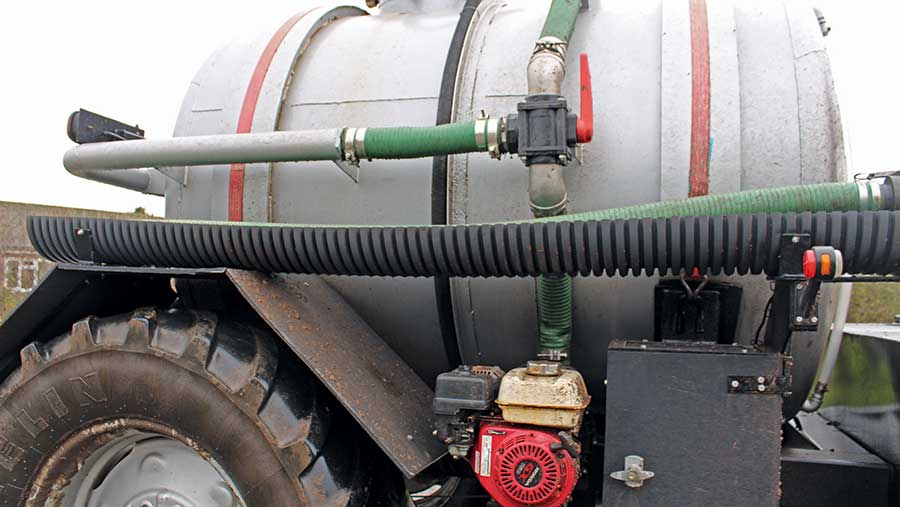
The modified bowser pipework
Originally both bowsers were running on Pacer pumps, but a switch to a Hypro version cut the time to fill 4,000 litres from 7min to 4min. “When we’re busy that adds up to a 90min time-saving per day,” he says.
A later modification to the original bowser involved fitting a Honda engine and pump for when the bowser isn’t hooked on the back of the sprayer. This involved tig welding a new set of pipework that dropped down the opposite side to where the original Hypro pump was mounted.
This means the bowser can be filled independently of the sprayer and can double up as a tool for sluicing down sheds or acting as a massive fire extinguisher come harvest.
You can see pretty much all the sprayer manufacturers at the Syngenta Sprays and Sprayers Arena at this year’s Cereals Event. It takes place on 15 and 16 June at Chrishall Grange near Duxford in Cambridgeshire. You can buy tickets at www.cerealsevent.co.uk

